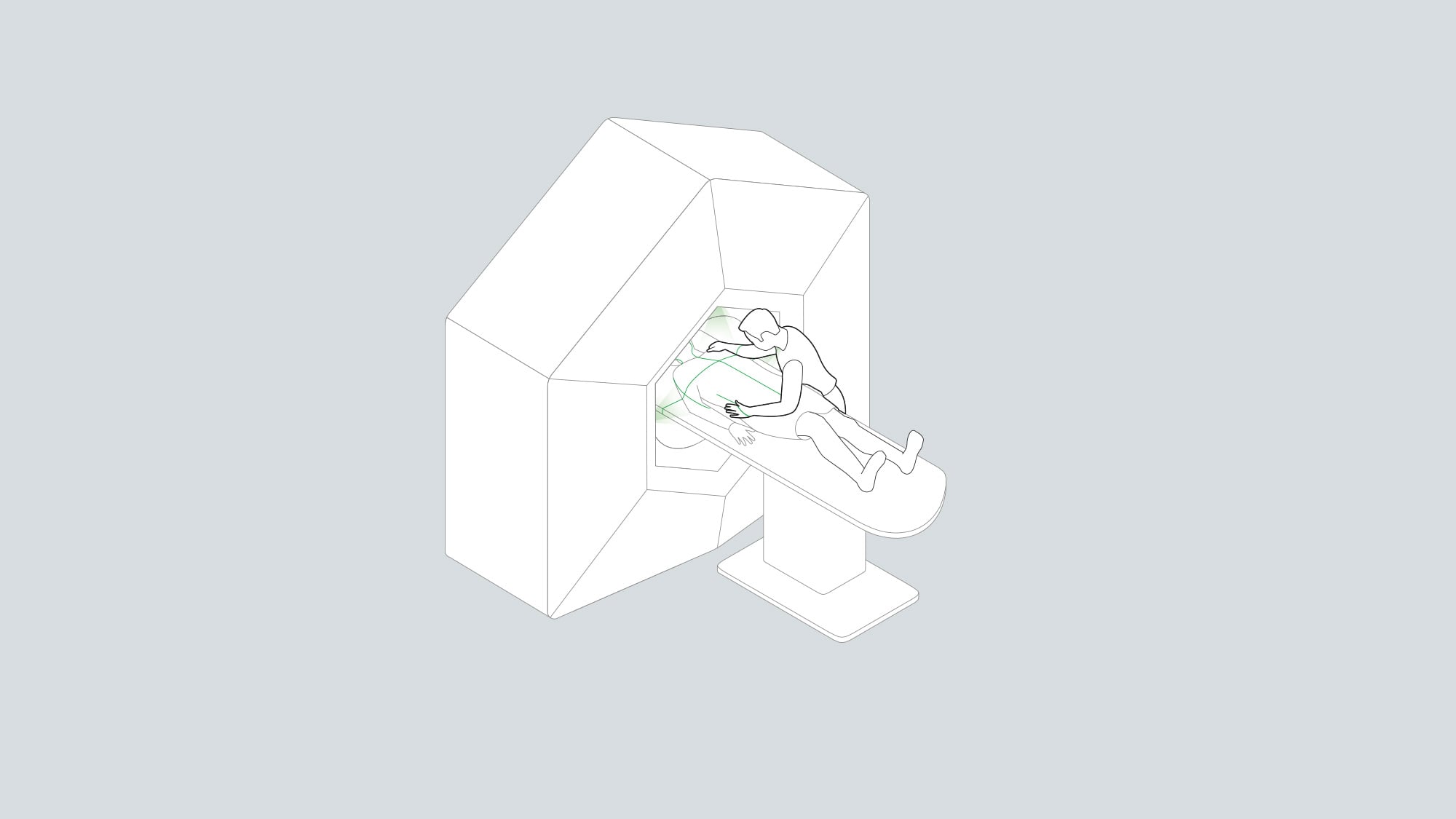Highly precise laser system you can rely on
APOLLO room lasers are used for precise and repeatable positioning of radiotherapy patients. After imaging-based planning via CT or MRI, the patient is positioned at the linear accelerator. The finest laser lines project the coordinates of the LINAC isocenter onto the patient's skin, allowing the patient's position to be reproduced from the CT or MRI with millimeter accuracy. In addition, the room lasers are a fundamental component of quality assurance. They aid in the precise orientation of the phantom to achieve measurement accuracy.
The APOLLO system has three (optionally four) lasers for the coronal, sagittal, and transversal body planes. You can choose the laser color, line and/or cross laser, and mounting option, all adapted to your individual room situation. A fourth laser prevents possible shadowing from the LINAC gantry in its initial position.
Thanks to their high quality, room lasers from LAP remain in use and highly precise for an above-average number of years.
Dr. Stéphane Muraro, Chief medical physicist, Centre de Cancérologie du Grand Montpellier, France
Supported LINACs
Regardless of which LINAC is used, C-Arm or bore-type, clinical staff and patients benefit from precise and easy positioning with external lasers. They enable a reproducible positioning and the same positioning process throughout different treatment modalities.
External lasers at bore-type LINAC
The use of external lasers on the bore-type LINAC has many advantages: During patient positioning, the patient is much more accessible. Work more ergonomically as a therapist and prevent back pain. Compared to patient positioning in the bore, there is no leverage effect and positioning is less strenuous. This makes your positioning process more accurate and faster. Re-imaging after cone beam CT is required less or not at all. Keep your timeslots or even reduce them to be able to treat more patients.
Patient interaction is much more comfortable and patients are more relaxed. This allows them to hold their position better, which improves the treatment result. Especially large and heavy patients can be positioned more easily.
Technical data
| Dimensions (L× W × H) | 237 x 110 x 105 mm (9.3 x 4.3 x 4.1″) |
|---|---|
| Weight | 2.6 kg |
| Laser color (typical wave length) | red (638 nm), green (520 nm), blue (450 nm) |
| Laser class | 2 |
| Laser adjustment | Remote controlled |
| Line width up to 4 m distance | < 0.7 mm (green, blue), < 1 mm (red) |
| Line length at 3 m distance | > 3 m |
| Power supply | 100-240 V AC, 50-60 Hz |
| Power supply (internal) | 24 V DC |
| Operating Temperature | 15–30 °C |
Q&A
How can I configure the APOLLO?
You can configure each APOLLO as you need to. Preconfigured sets of three or four lasers to project the coronal, sagittal and transversal plane are available. A fourth laser prevents shadowing from the LINAC gantry. You can configure the laser color of the system and for each laser in line or cross laser and mounting option, all adapted to your individual room situation.
Which color should I choose?
Historically, red was the only laser color that could be technically realized for a long time. Today, the laser colors red, green and blue can also be offered. Here, the human eye perceives green as a sharper line than red and blue sharper than green. Another aspect you should consider is the skin color of your patients. Overall, after 20 years of experience, it can be stated that the green laser color is the most popular.
How long is the laser line?
The length of the laser line is equal to the distance between laser source and patient. Therefore, for example, the laser line is only one meter long at a distance of one meter, but 4 meters long at a distance of 4 meters.
Do I get a quality report?
Yes, during production a Delivery Report with all the quality parameters is created for each laser system, which is handed over to our customers after installation.
How can I combine the imaging modalities CT and MRI for radiation therapy?
The DORADOnova laser system can be used to project reference or target coordinates on the patient's skin, which are then marked by clinical staff. These coordinates serve as the basis for patient planning and are used to position the patient on the MRI: Using the DORADOnova MR3T Laser System, the same coordinates that were used on the CT are projected and the patient is aligned with them.
This lays the foundation for reproducible positioning of your patients throughout the different imaging modalities.







